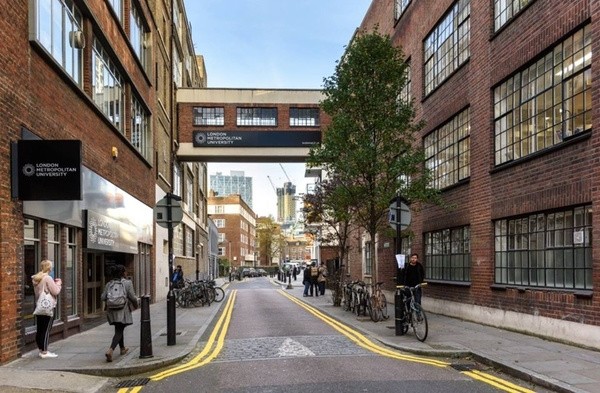
The Cass School of Art, Architecture, and Design will be renamed to disassociate the school from Sir John Cass, who was a prominent slave trader during the 17th-century, the London Metropolitan University has announced.
The rebranding of "The Cass" was announced following consultations with the students' union, the school staff, and the board of governors, London Metropolitan University vice-chancellor, Lynn Dobbs said.
Dobbs said that the school recognizes that using Sir John Cass's name contributes to his redemption without acknowledging the enormous pain Sir John Cass has caused as a significant figure during the slave trade's early development.
The school described the use of Sir John Cass's name as "incompatible" with their commitment to support the Black community, Dobbs added, and actively oppose all forms of racism. The school will temporarily be known as The School of Art, Architecture, and Design, as a new name is yet to be announced.
LATEST REPORT: There Are Still Pandemic-Priced Homes For Sale
The naming of the school after Sir John Cass dates back to 1899, Dezeen noted, when the Sir John Cass's Foundation established the Sir John Cass Technical Institute. A series of mergers has resulted in the school's changing of the name to The Sir John Cass College, then to The Sir John Cass School of Art. In 2012, the school was again renamed The Sir John Cass School of Art, Architecture, and Design.
There has been an increase in the awareness over the treatment of slave traders recently, Dezeen reported, especially after the toppling of Edward Colston's statue during an anti-racism protest in Bristol.
Colston was a well-known 17th-century slave trader and was a member of the Royal African Company that transported around 80,000 people, including children, to the Americas from Africa, a BBC report noted.
ALSO READ: Millennials May Have to Wait Longer for Their Dream Home Due to Pandemic
Meanwhile, statues and other sites in Labour councils in England and Wales, as well as those found across London, will be reviewed to see if they are linked to slavery and plantation owners, The Guardian reported.
The move comes after the local council decided to take down the statue of Robert Milligan at West India Quay following an online petition initiated by Councillor Ehtasham Haque. London mayor, Sadiq Khan, earlier announced the review of the capital's landmarks, street names, and names of public buildings to ensure they are in line with London's diversity, the report added.
Moreover, in response to the Black Lives Matter protests, the Manchester Council has also announced the review of every monument of historical figures across the city. Protestors are petitioning for the removal of Robert Peel's statue in Piccadilly Gardens, claiming that Peel's father circulated a proslavery petition just one year after the slave trade was abolished in 1805.
Following the Black Lives Matter protest last June 7, 2020, Winston Churchill's statue in London's Parliament Square was seen graffitied with the words "was a racist." Scottish politician Henry Dundas' statue also suffered the same fate during last Sunday's protests. An online petition was also launched, calling for the removal of his statue and renaming of streets named in his honor, CNN reported.
© 2025 Realty Today All rights reserved. Do not reproduce without permission.



